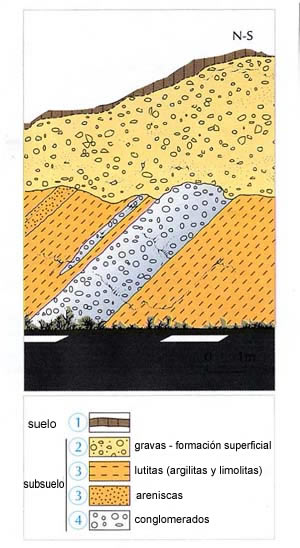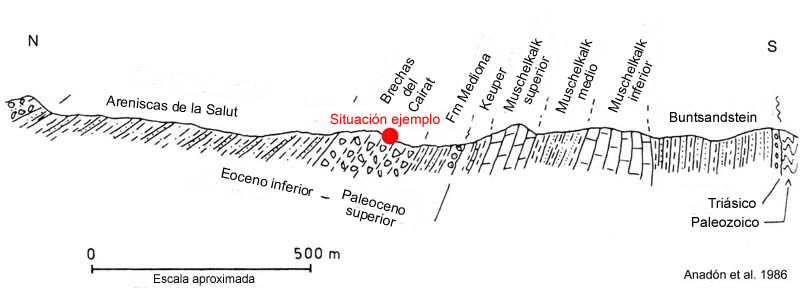The synthesis of the observations made consists of summarizing the obtained data and making the geological cross section of the outcrop.
Geological cross sections must show the structural characteristics observed and, using the appropriate system of symbols, the present kind of materials. The system of symbols, the position of the cross section and map scale used must be recorded.
Interpretation
Following the cross section made we will start geologic history interpretation that we can deduce from geologic criterion of relative dating. The reference that we use is Actualism (present is the key for analysing past.)
It is a question of looking for criterion with whom we could establish the age of the described units (relative dating) and structure elements that show its evolution. Forming process can be known thanks to kind of materials and, in some cases, palaeogeographic conditions of the place where those materials were formed.
We can start interpreting with the help of an ‘inference guide’, where inferences are made beginning with the risen problem and observations that have been made, and with the ones we will make some conclusions.
Finally, when we organise all the conclusions we will obtain a sequence of events in chronological order.
- Model of diagram: inferences guide, recommended for beginners
- Model of diagram, section 4-5, recommended for beginners



